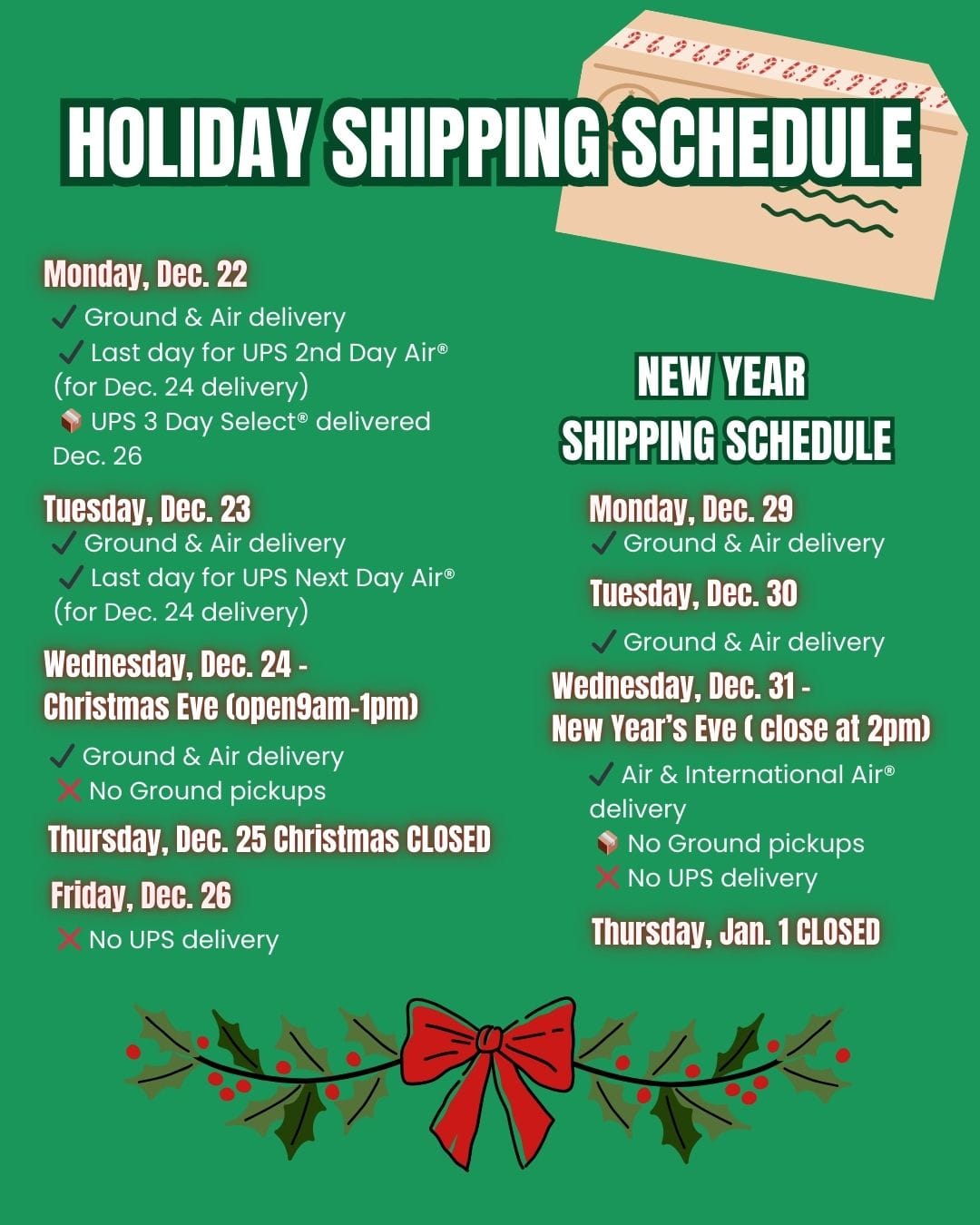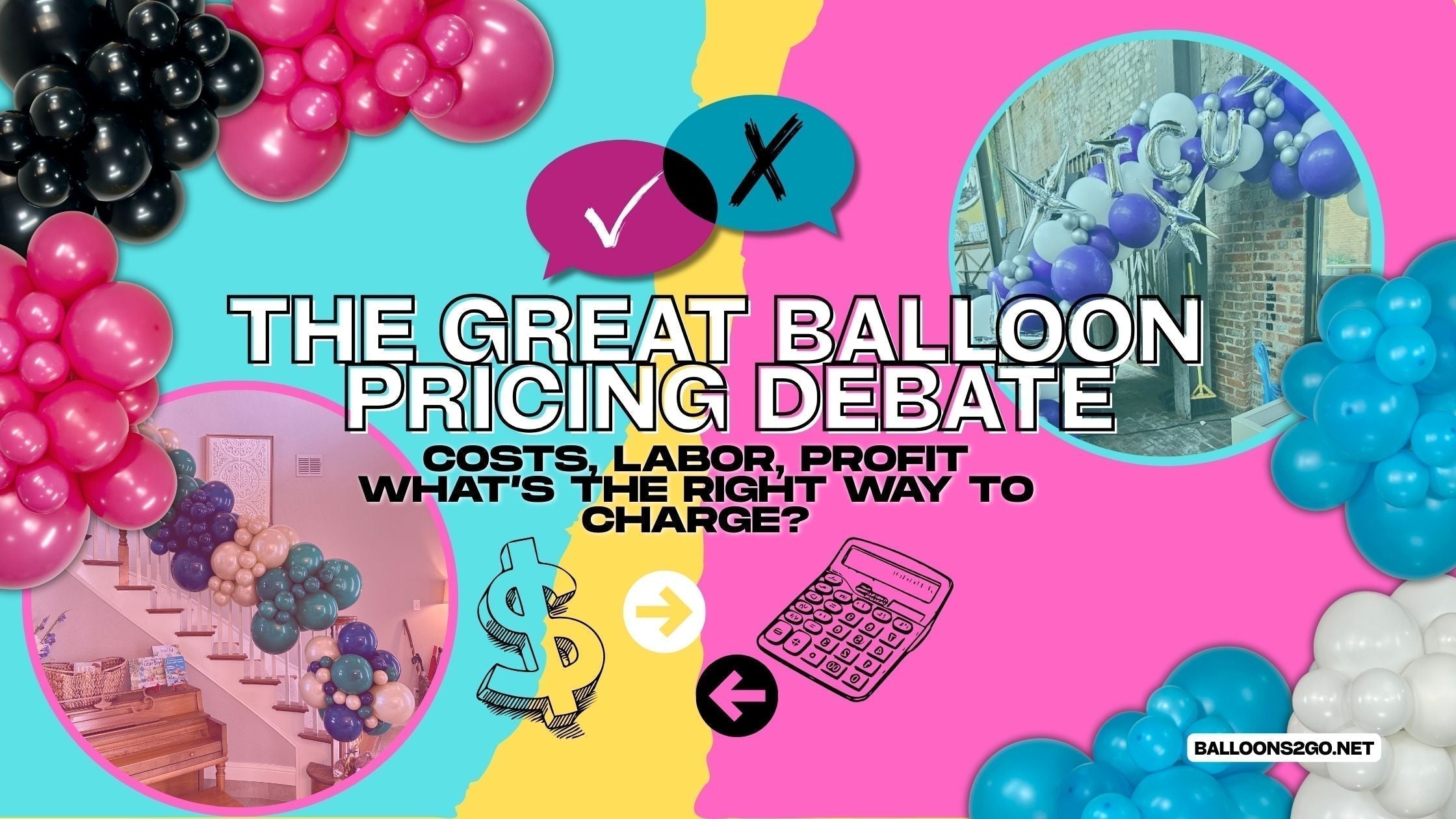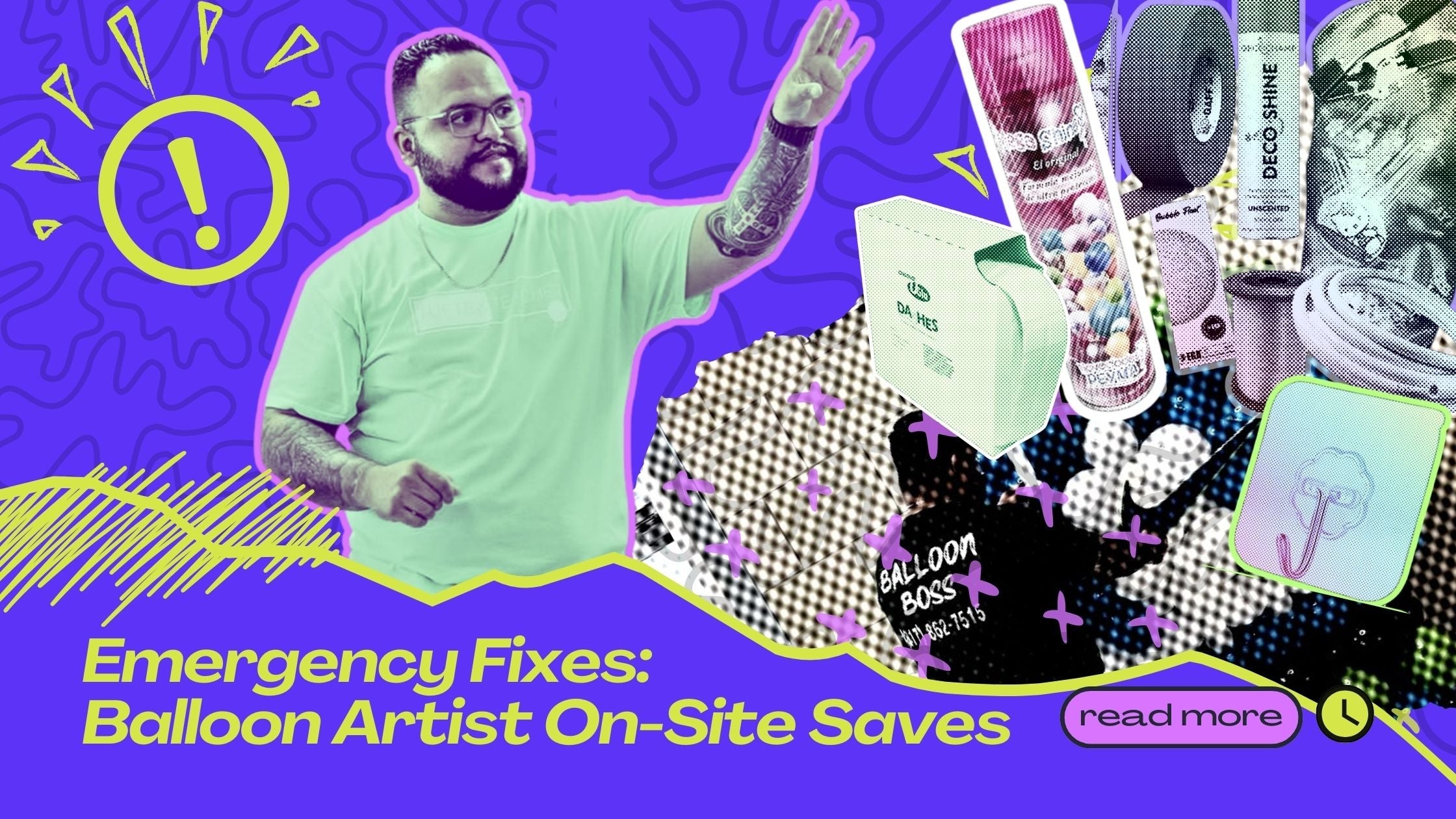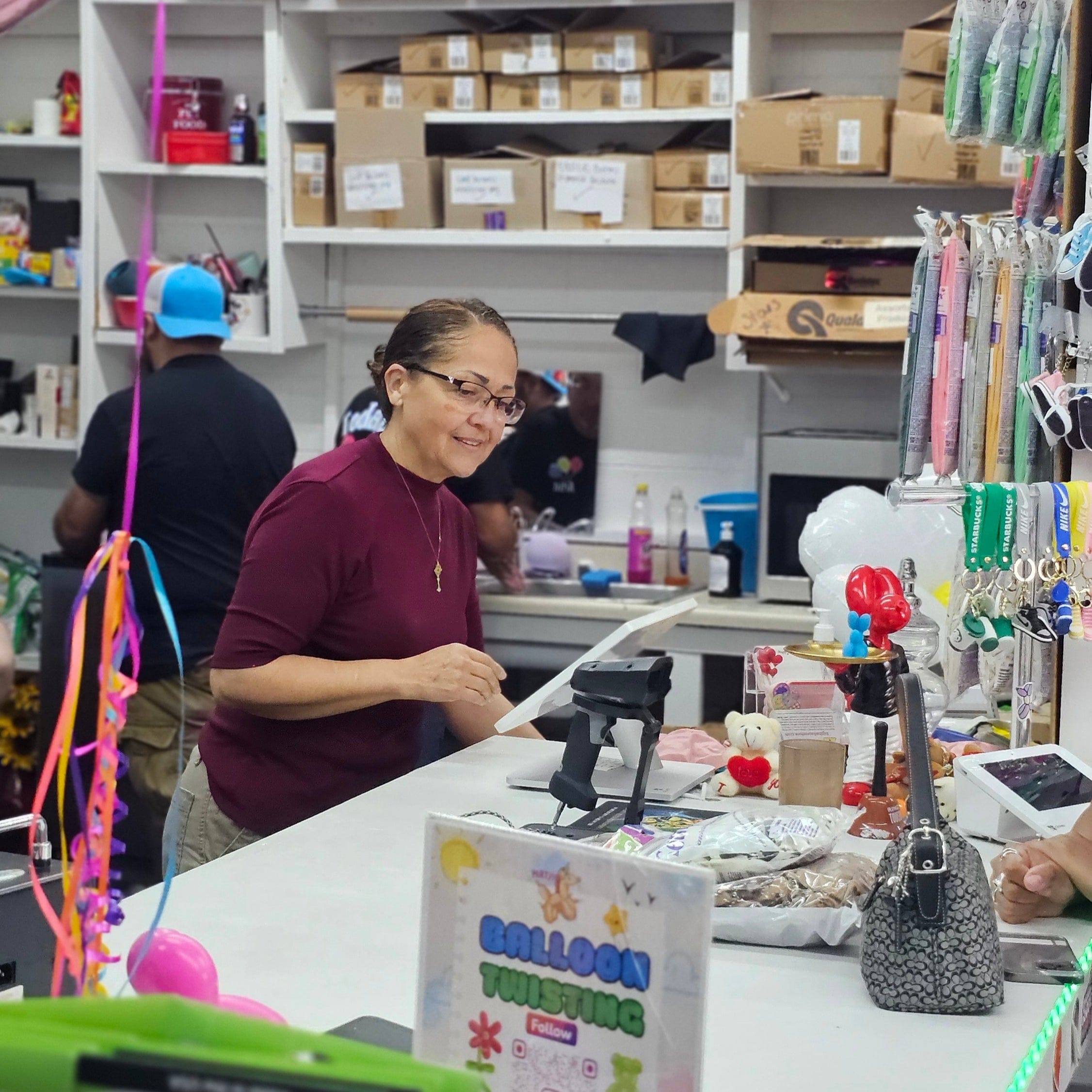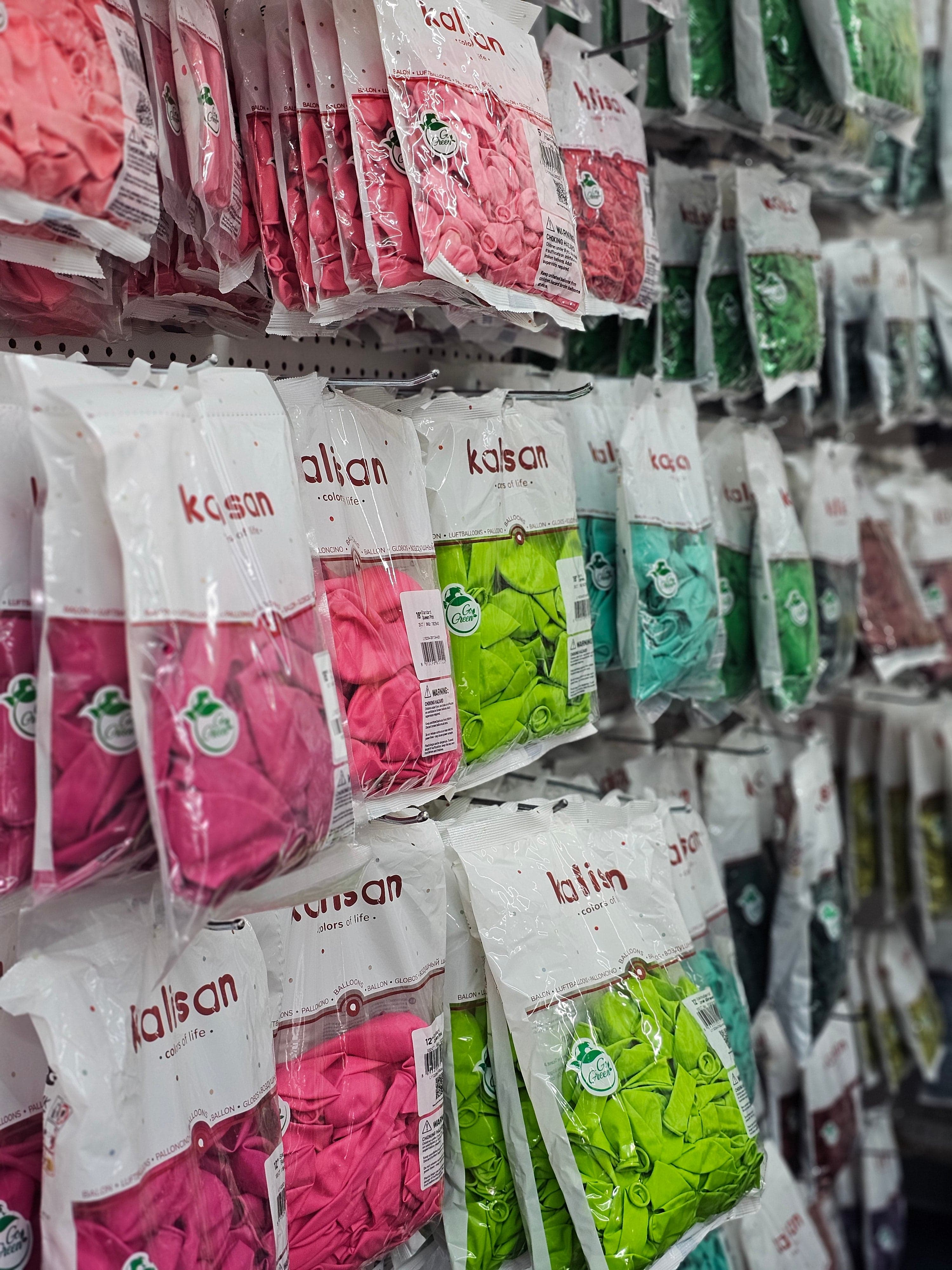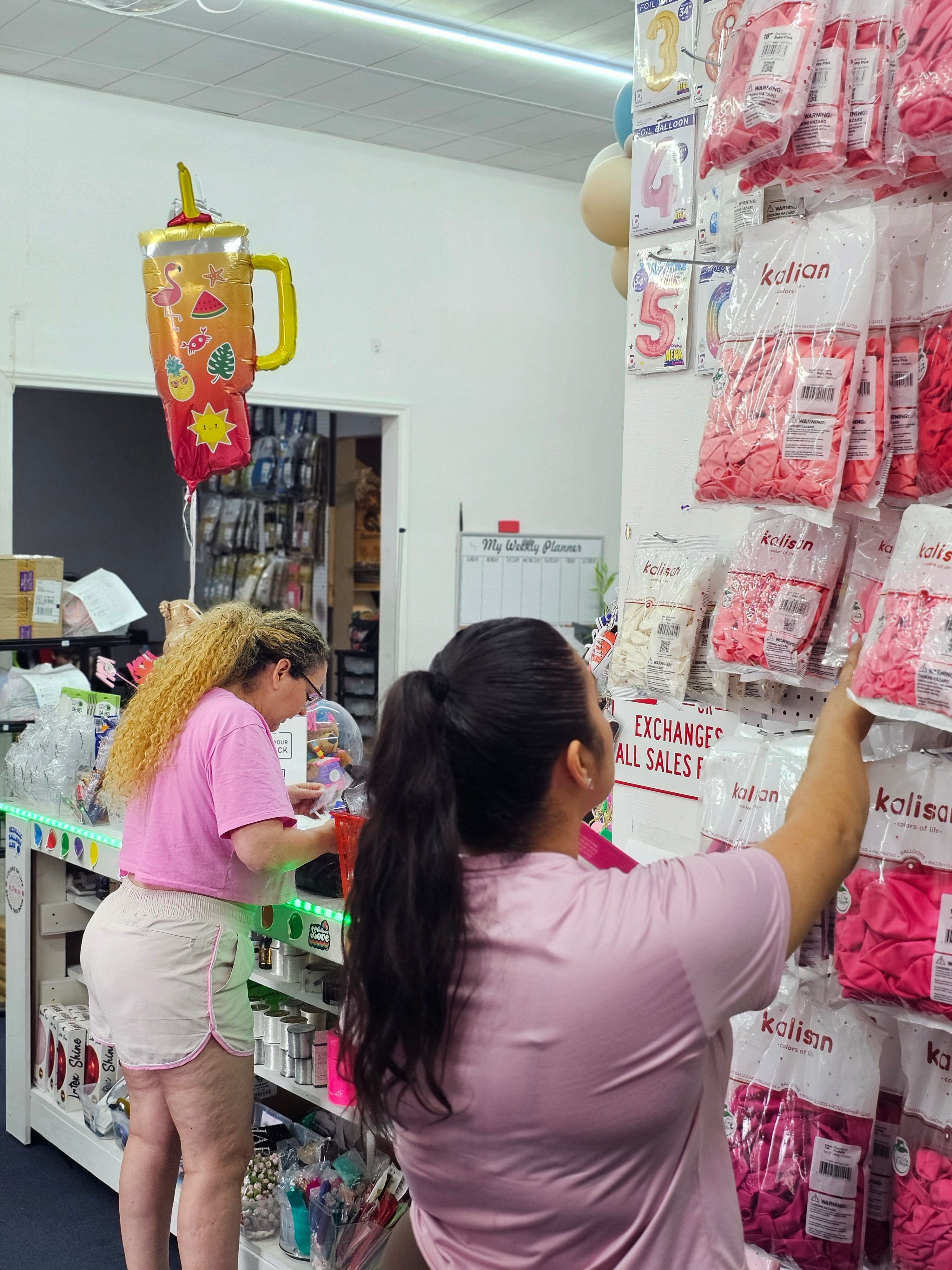Why Pricing Balloons Is a Debate in the First Place
If you’ve ever wondered “How much should I charge for balloons?” - you’re not alone. Ask ten balloon pros the same question, and you’ll probably get ten different answers. Some will say, “Charge what the market allows.” Others will argue, “Always stick to a formula.” And then there are those who admit they still don’t know if they’re charging enough.
Here’s the truth: pricing in the balloon industry is one of the most debated (and heated) topics. In fact, one Quora thread on pricing has over 1.4 million views and hundreds of replies. Clearly, this isn’t just your struggle - it’s an industry-wide conversation.

And it makes sense. Balloons aren’t just balloons. They’re art. They’re labor. They’re logistics. They’re your time, your skill, your creativity, and your business expenses. That’s why there’s no magic number. But there are systems and strategies that can help you figure out what works for your business - and that’s what we’re diving into today.
By the end of this post, you’ll see why pricing is never one-size-fits-all, but also why undercharging isn’t sustainable. Whether you’re brand new or years into balloon design, this guide will help you evaluate your costs, protect your profit, and confidently quote your clients.
👉 And because this is the balloon pricing debate, expect opinions. Expect controversy. And expect to walk away with a clearer sense of what’s right for you.
If you’re new to pricing and just need a simple formula to start, check out our beginner guide: How to Price Your Balloon Setups (Without Undercharging Yourself).
Client Budget vs. Your Pricing Reality
Let’s start with one of the biggest debates: do you price based on the client’s budget, or do you set your own pricing structure regardless?
Here’s the problem: if you’re constantly adjusting your prices down to match what clients say they can pay, you’ll eventually burn out. Sure, you might land the job, but you’ll hate yourself when you realize you’ve worked 10 hours, hauled a van full of balloons, and barely covered your costs.
On the flip side, sticking firmly to your pricing structure may mean losing some clients - but it also means the clients you do land will value your work, respect your business, and understand the quality they’re paying for.

So where’s the balance?
-
✅ Ask for the client’s budget upfront. If they have one, you can recommend what’s realistic within that price range.
-
✅ Educate, don’t undercut. If their budget is too low, explain why this type of décor costs what it does. (This is where you can point to materials, time, and design skills.)
-
✅ Set minimums. Decide the absolute lowest you’ll go for an install and don’t dip under it. This protects your profit margins and your sanity.
At the end of the day, your pricing has to cover more than an install -it has to cover your business. If you’re pricing based only on what clients want to spend, you’re building their event… at the expense of your own livelihood.
Breaking Down the Real Costs of Balloon Décor
Here’s where creative pricing gets tricky - because most outsiders (and many new decorators) think you’re just selling “balloons.” But pros know you’re selling so much more. If you don’t factor in all the moving pieces, you’ll undercharge every single time. Let’s break it down.
Materials (It’s Not Just the Balloon Price Tag)
Sure, a single latex balloon might cost you $0.20. But here’s the catch:
-
You need extras because They pop, oxidize, or arrive defective. (Most pros budget a 5–10% overage.)
-
Specialty foils, reflex finishes, or custom printed? Those come with higher costs, and clients expect you to stock them.
-
Accessories add up too: glue dots, fishing line, command hooks, balloon shine, and weights.
When you’re quoting, don’t just count balloons. Count everything it takes to build the design.
Labor & Time (Your Biggest Cost)
Your time isn’t free. In fact, for most balloon businesses, labor is the biggest expense.
Think beyond inflation:
-
Design work: sketching, quoting, customizing for clients.
-
Inflation & assembly: physically blowing up hundreds of balloons (with pumps, not lungs, thank you).
-
Install time: hauling, ladder-climbing, zip-tying - it’s labor intensive.
-
Client communication: every email, call, and text adds up.
Pro tip: Track how many hours you actually spend per job. You’ll be shocked how often you undercount your own time.
Check out our blog on Balloon Artist Emergency Fixes to see why labor is so valuable when things go wrong onsite.
Transport & Logistics (The Hidden Price Tag)
Fuel, vehicle maintenance, tolls, and parking fees are all part of the job. And don’t forget:
-
These arrangements take up SPACE. You might need a van, trailer, or even to rent a larger vehicle for big installs.
-
Travel time is billable - it’s part of your day.
One of the most common mistakes? Ignoring transport costs until you’re in the hole.
Tools & Equipment (Investments That Pay for Themselves… Eventually)
Electric inflators, framing, ladders, stands, balloon sizers -these tools aren’t cheap. And while they may last, they wear down and need replacing. That’s part of your overhead.
Think of it this way: every time you charge for an install, a tiny slice of that fee should go toward your equipment fund. Otherwise, when your inflator breaks mid-job, you’ll feel the financial sting.
Browse our balloon tools & accessories to see the essentials every artist should keep stocked.

Overhead (The Silent Killer)
Phone, insurance, workspace rent, website hosting, education, staff training - all the boring but critical stuff. These aren’t “per job” expenses, but they need to be factored into your pricing if you want long-term profit.
Profit (Yes, You Need It)
Here’s the most controversial piece of the debate: should artists add a profit margin on top of all this, or is breaking even “good enough”?
Spoiler: breaking even means you’re working for free. Profit isn’t greed—it’s what allows you to grow, reinvest, and stay in business. Without it, you’re not a business, you’re just doing fun décor as a very expensive hobby.
So when someone says, “Why are your balloons so expensive?” the real answer is: they’re not. They’re priced to reflect all the hidden costs that go into making their event magical.
Area Average Pricing vs. Value-Based Pricing
Now here’s where the gloves come off. Some pros swear you should always research what others in your area are charging and base your pricing around that. “Stay competitive,” they say. “Don’t price yourself out of the market.”
But here’s the debate: if you’re only looking at the “average” pricing in your area, you’re letting other people decide the value of your work. And not everyone’s work - or business structure -is equal.
The Case for Area Average Pricing
-
Pros: Helps new artists avoid wildly overpricing or underpricing when they don’t have data yet. Gives you a ballpark starting point.
-
Cons: The “average” is often dragged down by hobbyists undercharging just to book jobs. If you base your rates on theirs, you’ll always be undervaluing yourself.
The Case for Value-Based Pricing
-
Pros: You build pricing around your actual costs, your skill level, and your value. That means you’ll always cover expenses, and you’ll attract clients who respect your work.
-
Cons: Yes, you may lose jobs to cheaper competitors. But those usually aren’t the clients you want long-term anyway.
👉 Example: Two artists may both quote a $500 garland. One is using premium brands like Sempertex Latex with pro tools, perfect framing, and a polished install. The other is using discount brands, cutting corners, and hoping nothing pops. Same price, completely different value.

Where the Debate Really Lands
At the end of the day, pricing isn’t about competing with the cheapest quote in town. It’s about communicating your value. Clients don’t just pay for balloons - they pay for your reliability, your artistry, and your ability to show up and deliver.
So yes, research your local market. But don’t let it be the ceiling. If you’re offering premium work, you deserve premium pay.
Experience, Skill & Design: Why Your Work Is Worth More
Here’s something most clients don’t realize: 100 balloons in the hands of a beginner will not look the same as 100 balloons in the hands of a pro.
A seasoned artist can take a small install and make it look elevated, balanced, and photo-ready. A beginner might need three times the product to get the same impact. That’s the power of experience - and it deserves to be priced accordingly.
Design Work Isn’t Free
-
Sketching out ideas, choosing colors, and sourcing the right mix of latex + foils is real work.
-
Clients often don’t factor this in - but you should. The hours you spend before even inflating a single balloon matter.
Your Eye for Style = Your Value
Balloon décor isn’t just about blowing up latex. It’s about color theory, proportion, layering, and creativity.
-
Earthy neutrals vs. pastel palettes.
-
Chrome accents that take an install from “cute” to “luxury.”
-
Knowing when to keep it simple and when to go dramatic.
Professionalism Is Part of the Price
Let’s be real: anyone can buy balloons at a party store. But not everyone can:
-
Show up on time, prepared, with backups.
-
Handle client stress and venue restrictions with calm.
-
Deliver installs that don’t collapse halfway through an event.
This level of professionalism - born of years of practice - is exactly why your work is worth more than “average.”
The Debate Angle
Some decorators argue, “It’s just balloons - clients won’t pay more for experience.” But the truth? Clients do pay for trust, consistency, and confidence. Your skill is the difference between a forgettable backdrop and an event centerpiece that people won’t stop photographing.
And that’s something no price sheet from the “average market” can measure.

Hourly vs. Flat Rate: The Great Pricing Divide
Here’s where the pricing debate really heats up - how do you actually charge for your work? There are two camps, and both are loud about why their way is “the right way.”
The Flat Rate Camp
Flat-rate decorators swear by keeping it simple. A garland is X. An arch is Y. A backdrop install is Z.
-
Clients love the clarity: “What you see is what you pay.”
-
Easier for sales: No spreadsheets, no endless math.
-
Good for small shops who want quick yes/no answers from clients.
But here’s the catch - what if one garland takes 2 hours and another takes 8? Suddenly your “flat rate” isn’t really fair… to you.
The Hourly Camp
Hourly decorators argue that time is money - literally. You pay for their hours, plus materials.
-
It accounts for custom designs, tricky installs, or difficult venues.
-
More honest for jobs that take unexpected turns (wind, heat, client changes).
-
Ensures your time is valued properly, not lost in a flat fee.
But clients? They hate it. Most don’t want to guess how many hours their balloon wall will take. They want certainty - and hourly pricing feels risky to them.
So Who’s Right?
Here’s the truth: both systems work, but neither is perfect.
-
Flat rate keeps clients happy, but risks underpaying the artist.
-
Hourly protects the artist, but can scare away potential bookings.
That’s why many pros find a hybrid approach - flat rates for standard installs, with hourly pricing baked into “custom design” jobs.
👉 The key isn’t the model. It’s knowing your numbers and making sure you don’t sell yourself short.
Final Thoughts: Build a Pricing System That Works
Here’s the truth: balloon pricing isn’t one-size-fits-all. Some artists thrive with flat-rate packages, others prefer hourly billing, and many build a hybrid model that fits their market. What matters most is that your system:
-
Covers your costs – from balloons and materials to transport and tools.
-
Pays you fairly – your time, design work, and creative expertise have value.
-
Leaves room for profit – because sustainable businesses don’t just break even.
The key is balance. Test different approaches, track your numbers, and adjust as you grow. What works for a new artist in a small town won’t look the same as what works for an established decorator in a big city. And that’s okay - your pricing should reflect your business, not someone else’s.
💡 Pro Tip: Revisit your pricing every 6–12 months. As your skills, demand, and costs change, so should your rates.
Ready to stock up on pro-quality balloons to back up your pricing with colors that wow?
👉 Shop our full collection of Sempertex, Tuftex, and Kalisan balloons today at Balloons2Go.net.

